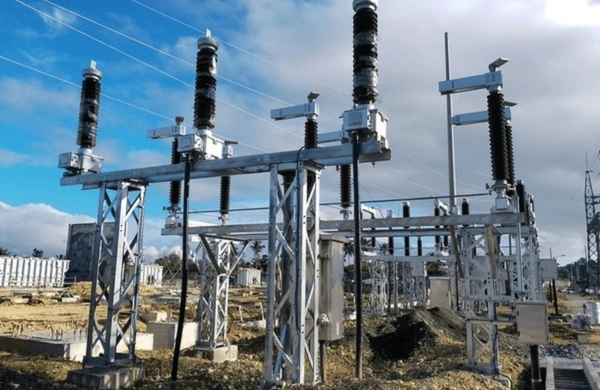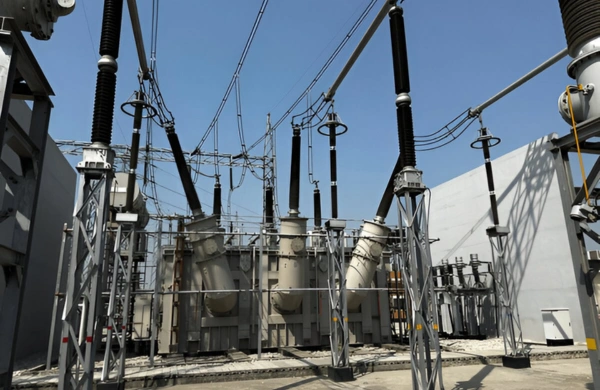Introduction
Every industrial facility depends on reliable voltage conversion to operate machinery, control systems, and automation equipment safely. When high-voltage power from the grid or substation needs to be converted into usable levels, voltage step down transformers play a vital role.
Step down transformers reduce electrical voltage while maintaining power balance, ensuring that sensitive equipment receives stable, isolated, and efficient power. These transformers are fundamental to manufacturing plants, data centers, utilities, and infrastructure projects.
Zetwerk manufactures precision-engineered step down transformers designed for continuous duty, thermal efficiency, and compliance with IEC and IEEE standards. Built with superior materials and automated manufacturing, Zetwerk’s transformers deliver safety, stability, and performance for North American industrial and commercial systems.
Know About Voltage Step Down Transformers for Safe Industrial Power Conversion
1. What Is a Voltage Step Down Transformer?
A step down transformer converts high primary voltage into a lower, safer secondary voltage while maintaining the same frequency and power level. For example, it may convert 11 kV from a substation into 415 V or 240 V suitable for industrial or equipment-level use.
The basic principle is electromagnetic induction, where voltage transformation is determined by the ratio of turns between the primary and secondary coils.
Key functions include:
- Reducing incoming grid voltage to usable levels.
- Providing isolation between power sources and connected loads.
- Protecting equipment from overvoltage and electrical transients.
- Enabling efficient power distribution across plant networks.
Zetwerk designs step down transformers with optimized core geometry and precision windings to achieve minimal loss and high voltage regulation across varying load conditions.
2. Design and Construction Features
The design of a voltage step down transformer directly impacts its efficiency, temperature stability, and service life. Zetwerk employs advanced design tools and high-quality materials to ensure consistent performance.
Core:
Built using cold-rolled grain-oriented (CRGO) or amorphous metal laminations, ensuring low hysteresis and eddy current losses. The stacked core configuration minimizes magnetostriction and operational noise.
Windings:
Copper or aluminum conductors wound with precise layering to maintain voltage balance and minimize leakage reactance. High-temperature insulation systems (Class F or H) ensure durability under continuous load.
Insulation:
Resin-impregnated or oil-immersed insulation provides high dielectric strength. Epoxy varnishing and vacuum drying prevent moisture ingress and insulation degradation.
Enclosure:
Rugged enclosures designed for indoor or outdoor installations. IP55 or higher protection ensures resistance to dust, humidity, and contaminants.
Cooling:
Natural air (AN) or oil-natural (ONAN) cooling systems are used depending on rating and application environment.
3. Performance Characteristics and Testing Standards
Zetwerk’s step down transformers are engineered to meet stringent efficiency and reliability benchmarks, conforming to IEC 60076, IEC 61558, and IEEE C57.12 standards.
Typical performance features:
- Voltage range: Up to 33 kV primary; secondary from 120 V to 690 V.
- Frequency: 50 Hz or 60 Hz.
- Efficiency: Above 98.5% for industrial-grade models.
- Voltage regulation: Typically within ±1.5% under full load.
- Insulation level: BIL tested up to 95 kV depending on rating.
- Temperature rise: Limited to Class F (100°C) or H (125°C) for continuous duty.
Each transformer undergoes:
- Ratio and polarity tests
- Insulation resistance measurement
- No-load and load loss testing
- Temperature rise test
- Impulse and dielectric strength testing
Testing is performed at Zetwerk’s in-house facilities equipped with advanced digital instrumentation, ensuring full compliance with customer specifications.
4. Applications of Step Down Transformers in Industry
Step down transformers are integral to almost every industrial power setup. They ensure that power delivered from substations is safely reduced for end-use applications.
Major use cases include:
- Manufacturing plants: Supplying controlled voltage for motors, automation panels, and CNC systems.
- Oil and gas facilities: Powering compressors, drilling units, and process instrumentation.
- Data centers: Providing voltage conversion for server infrastructure and UPS systems.
- Renewable energy installations: Converting grid voltage for inverter-based systems.
- Construction and mining: Portable power solutions for heavy-duty electrical tools.
- Commercial buildings: Lighting, HVAC, and elevator systems.
Zetwerk customizes transformer designs based on industry, voltage class, load characteristics, and environmental conditions to ensure consistent power quality and safety.
5. Dry-Type vs Oil-Immersed Step Down Transformers
Zetwerk offers both oil-immersed and dry-type transformers, each suited for specific applications.
Dry-Type (Cast Resin or VPI):
- Ideal for indoor, high-occupancy, or fire-sensitive environments.
- Maintenance-free and moisture-resistant.
- Commonly used in commercial buildings, tunnels, and data centers.
Oil-Immersed Transformers:
- Suitable for outdoor or heavy-duty industrial environments.
- Offers superior cooling and overload capacity.
- Easier to service and cost-effective for high-capacity applications.
Each type is designed for minimal losses and stable operation under variable load conditions.
6. Custom Engineering and Configuration Options
Zetwerk provides a wide range of customization options to meet project-specific electrical and mechanical requirements.
Key customization parameters:
- Voltage ratios: Any combination of primary and secondary voltages up to 33 kV.
- Winding material: Copper or aluminum based on cost and performance preference.
- Cooling system: AN, AF, ONAN, or ONAF options depending on duty cycle.
- Mounting design: Floor, wall, skid, or pole-mounted configurations.
- Enclosure rating: IP23 to IP65, including stainless steel or powder-coated steel housings.
- Taps: Off-circuit or on-load tap changers for voltage adjustment.
Zetwerk’s engineering team collaborates with OEMs, EPCs, and facility designers to ensure transformers meet load profiles, harmonics, and environmental conditions of each site.
7. Safety and Reliability
Zetwerk’s voltage step down transformers are engineered for maximum safety, meeting international standards for insulation, isolation, and thermal management.
Safety features include:
- Electrostatic shielding: Prevents electrical interference between primary and secondary circuits.
- Overload protection: Thermal sensors and circuit breakers safeguard against overtemperature conditions.
- Grounding systems: Ensure personnel safety and fault protection.
- Fire-resistant materials: Class F and H insulation with flame-retardant coatings.
- Seismic and vibration-tested construction: Ensures mechanical integrity in industrial environments.
These safety features ensure compliance with OSHA and NFPA requirements for electrical installations in the U.S.
8. Manufacturing and Quality Assurance at Zetwerk
Zetwerk’s transformers are manufactured in ISO-certified facilities using state-of-the-art automation and testing systems.
Manufacturing highlights:
- Precision core cutting and stacking: CNC-controlled processes minimize air gaps and magnetic losses.
- Automated coil winding: Ensures consistent turn ratio and uniform tension.
- Vacuum drying and impregnation: Guarantees moisture-free insulation.
- Oil filtration and degassing: For high dielectric strength in oil-immersed units.
- Final inspection and FAT (Factory Acceptance Testing): Every unit tested under simulated field conditions.
Full traceability is maintained through serialized documentation covering materials, test data, and QA certifications — ensuring predictable reliability and performance in the field.
9. Zetwerk’s Support for North American Industries
With growing electrification in manufacturing, renewable energy, and infrastructure, North American industries demand transformers that combine efficiency with robust safety standards.
Zetwerk’s advantages include:
- Compliance with IEC, IEEE, ANSI, and CSA standards.
- Engineering support for 50 Hz and 60 Hz applications.
- Scalable production for OEM and EPC requirements.
- On-time logistics and documentation for North American imports.
- Proven experience in delivering industrial-grade transformers for diverse sectors.
Zetwerk’s integrated supply chain ensures shorter lead times, technical transparency, and consistent performance across large-scale transformer projects.
Conclusion
Voltage step down transformers are indispensable for safe, efficient, and reliable power distribution across industrial and commercial networks. They enable plants, utilities, and infrastructure projects to operate efficiently while ensuring equipment protection and system stability.
Zetwerk transformers are built to meet the highest standards of electrical safety, performance, and durability. With precision engineering, automated production, and strict testing, Zetwerk ensures that every transformer delivers stable voltage conversion and long service life.




As industries expand their automation, renewable, and power infrastructure, Zetwerk continues to support North American customers with dependable transformer solutions engineered for lasting performance.
FAQs
a. It converts high input voltage into a lower, usable voltage for industrial or commercial equipment.
a. Zetwerk offers step down transformers from 415 V to 33 kV, customizable for system requirements.
a. Yes. Dry-type transformers are ideal for enclosed or fire-sensitive installations.
a. They comply with IEC 60076, IEEE C57, and ANSI standards for design and testing.
a. Yes. All units can be engineered for UL, CSA, and ANSI compliance.








